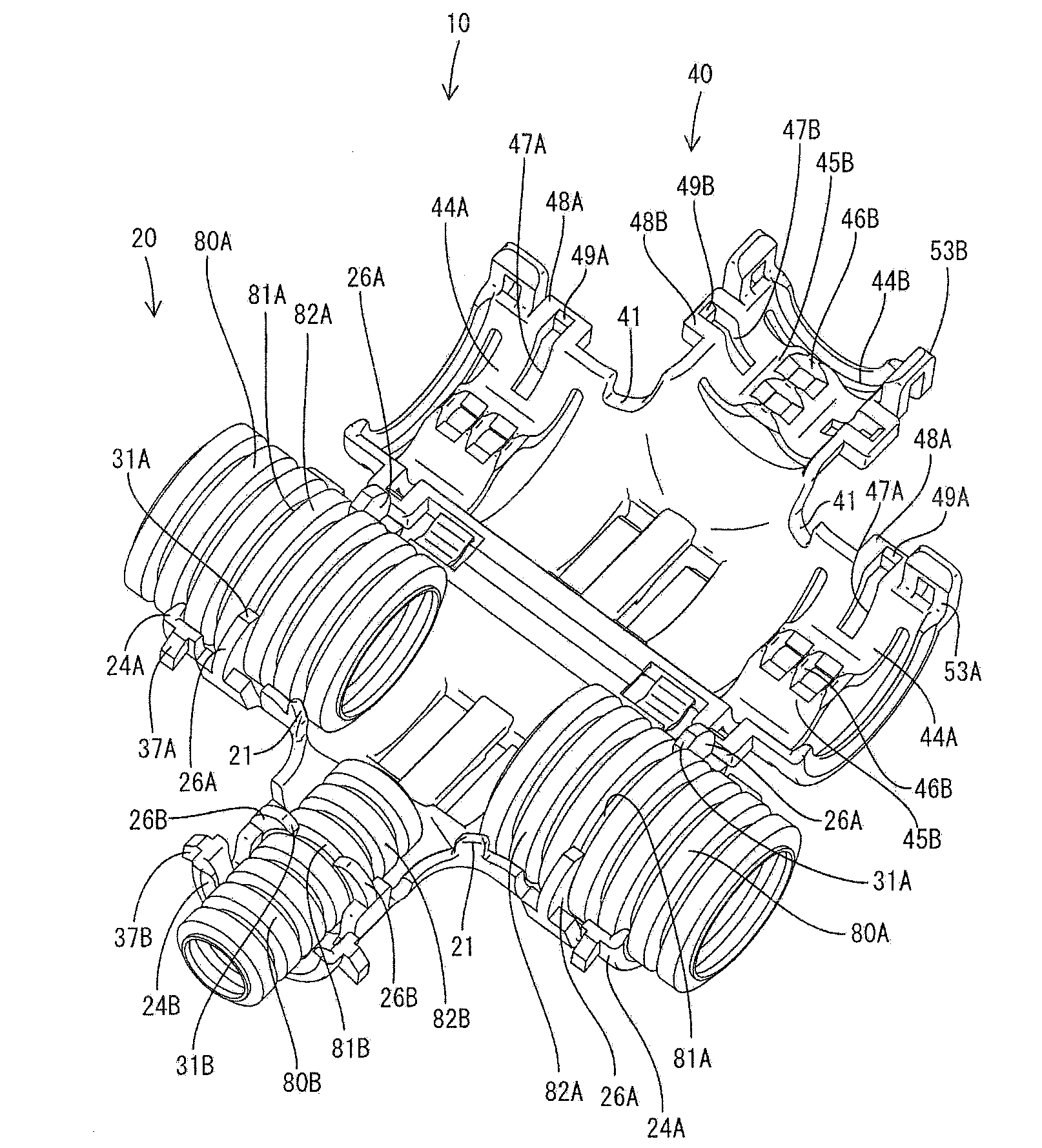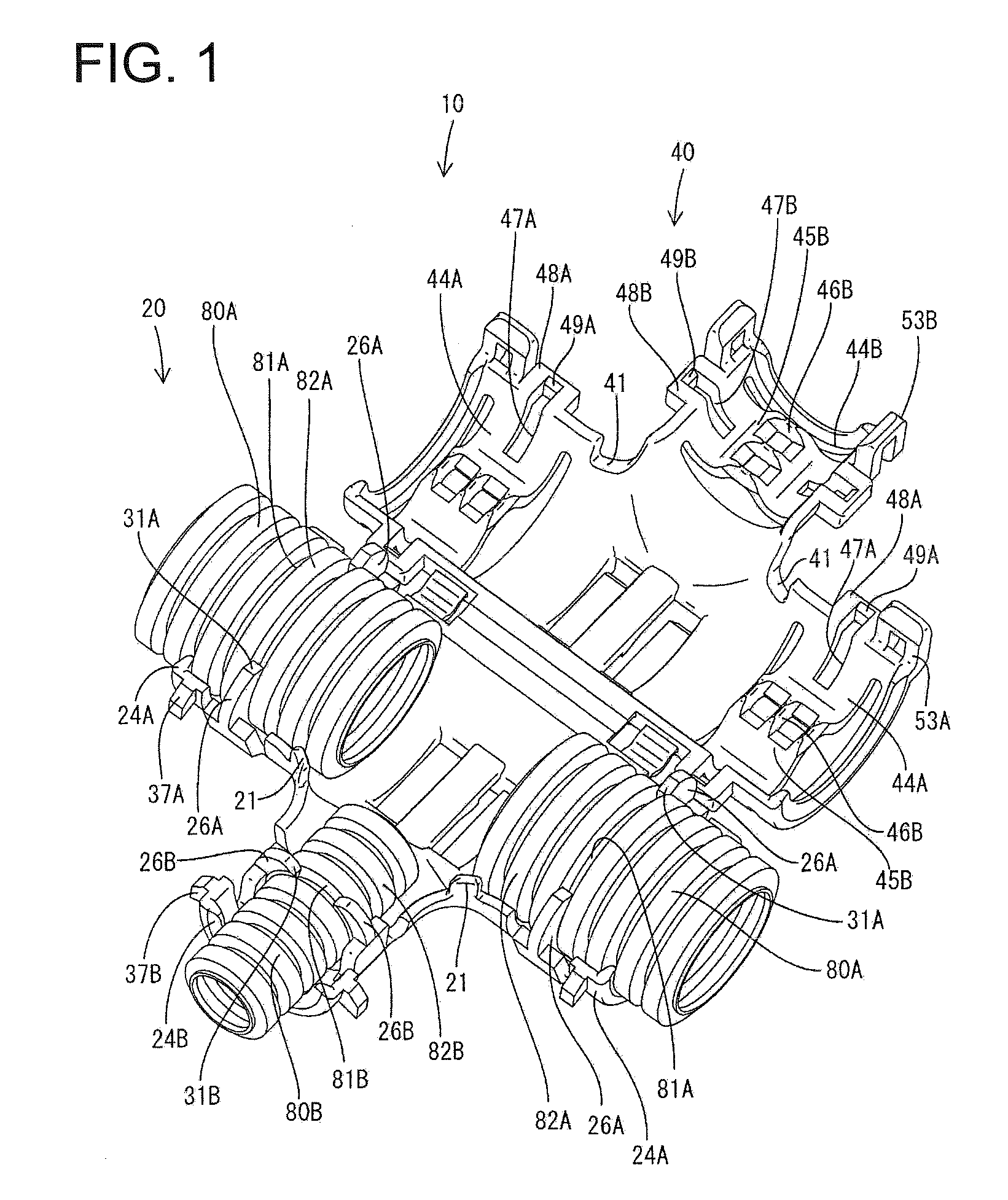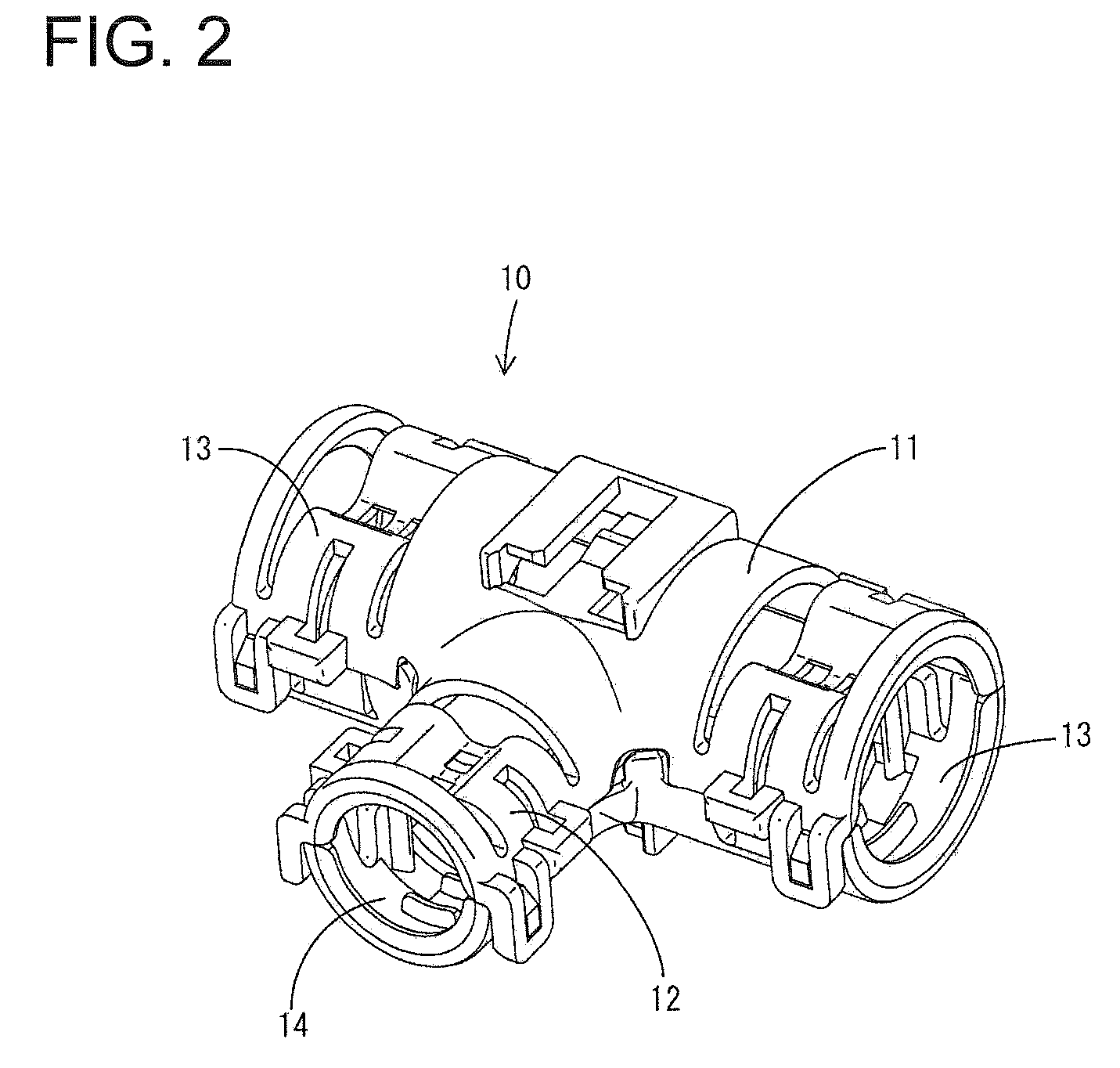Protector
- Summary
- Abstract
- Description
- Claims
- Application Information
AI Technical Summary
Benefits of technology
Problems solved by technology
Method used
Image
Examples
first embodiment
[0172]The temporary fixing ribs 26A, 26B are continuous with the first peripheral wall 22 via the supporting shafts 36A, 36B in the first embodiment and are displaceable inward and outward about the axial lines of the supporting shafts 36A, 36B. However, they may be continuous with the first peripheral wall 22 without the supporting shafts and may not be displaceable.
[0173]Two temporary fixing ribs 26A, 26B are provided on each of the main-line tube holders 13 and branch-line tube holder 14 in the first embodiment. However, they need not be provided on each tube holder.
[0174]The second peripheral wall 42 is formed with the windows 47A, 47B for permitting the penetration of the temporary fixing ribs 26A, 26B in the first embodiment. However, the windows may not necessarily be formed or may extend from the second peripheral wall to the first peripheral wall.
[0175]The second half member 40 is provided with the deformation restricting portions 48A, 48B for preventing displacements of th...
third embodiment
[0197]Although the leg 231 includes the first and second projections 237A and 237B in the third embodiment, they may be omitted. Alternatively, only the first or second projections may be provided.
[0198]Although two first and second projections 237A and 237B are provided, only one of each of the first and second projections may be provided.
[0199]The mounting portion 71 is aligned so that the engaging part 230 is inserted parallel to the branching direction of the branch 12 in the third embodiment, but it may be aligned in any direction.
[0200]The outer surfaces of the resilient plate 249 and the branch 12 are substantially flush with each other, but they need not be flush with each other.
[0201]The slanted surfaces 243 for the engaging leg are formed at the open end of the mount groove 241 for the leg 231, but need not be formed.
[0202]The surrounding-wall slanted surfaces 246 and the guide-plate slanted surfaces 247 are formed at the open end of the accommodating space 245, but either...
PUM
| Property | Measurement | Unit |
|---|---|---|
| Time | aaaaa | aaaaa |
| Current | aaaaa | aaaaa |
| Current | aaaaa | aaaaa |
Abstract
Description
Claims
Application Information
 Login to View More
Login to View More - R&D
- Intellectual Property
- Life Sciences
- Materials
- Tech Scout
- Unparalleled Data Quality
- Higher Quality Content
- 60% Fewer Hallucinations
Browse by: Latest US Patents, China's latest patents, Technical Efficacy Thesaurus, Application Domain, Technology Topic, Popular Technical Reports.
© 2025 PatSnap. All rights reserved.Legal|Privacy policy|Modern Slavery Act Transparency Statement|Sitemap|About US| Contact US: help@patsnap.com



